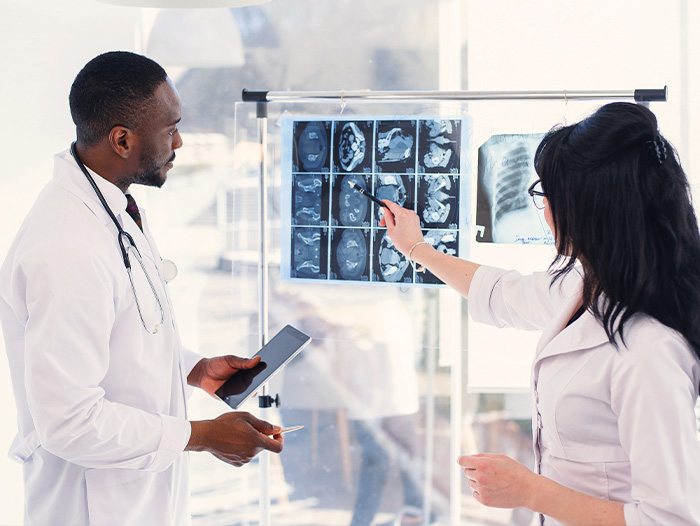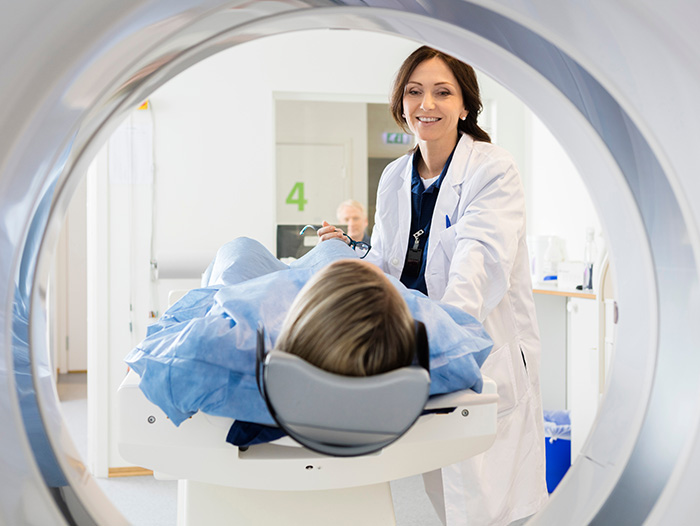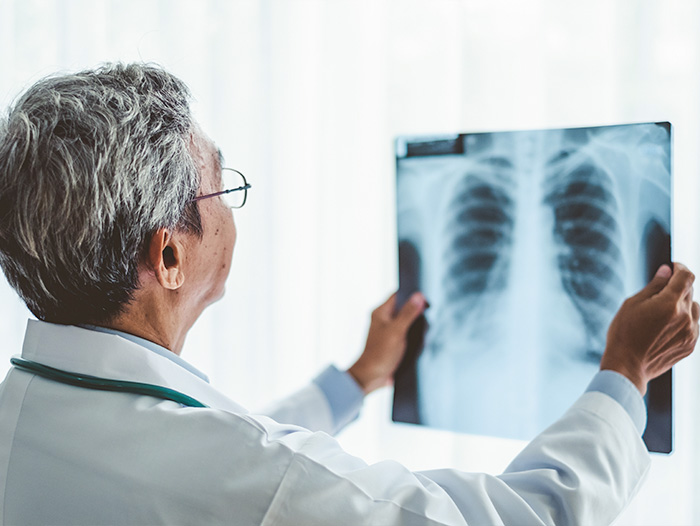Auto logout in seconds.
Continue LogoutMunich's Oktoberfest is the largest annual fair in the world, and a high incidence of intoxication and injuries during the event has often strained local emergency medical services. To reduce the burden on hospital EDs, Munich authorities have employed a new strategy to assess and treat patients on site when possible.
How a mobile CT helped reduce hospital admissions at Oktoberfest
Oktoberfest takes place over 17 days every year and typically attracts 390,000 visitors each day. The large number of visitors at the event has led to numerous incidences of injuries and intoxication.
Between 2015 and 2019, the mean number of Oktoberfest participants who were taken to local hospitals and admitted for surgically treated injuries was 69.1 per day.
After being canceled in 2020 and 2021 due to the COVID-19 pandemic, Oktoberfest reopened in 2022. To reduce the potential strain on EMS and local hospitals, Munich authorities installed a Siemens mobile CT scanner on site.
The scanner was available for use between 6 p.m. and 2 a.m. Monday through Friday and from noon to 2 a.m. Friday through Sunday during the event. It was operated by experienced technicians and radiologists, and an algorithm was used to determine which patients should be referred to hospitals.
Overall, 205 patients with presumed or observed mild traumatic brain injury underwent 317 CT scans during the course of the event. Of the scans, 191 were of the cranium, 67 of the midface, and 59 of the cervical spine. In total, 11 patients had intracranial bleeding, 23 had midface fractures, and none of them had cervical spine injuries.
Among these patients, the mean Glasgow Coma Scale (GCS) score, which ranges from 3 to 15, was approximately 14 in patients with and without intracranial bleeding.
After being evaluated with the mobile scanner, 17 of the 205 patients were referred to a hospital. An additional 14 patients were referred for unrelated reasons, such as insufficient "sobering up" or persistently poor GCS scores.
During the 2022 event, the mean number of patients who were taken to local hospitals and admitted for care was 62 per day, compared to 69.1 per day for the 2015 to 2019 Oktoberfest events. There were also fewer mean daily regional trauma-surgical admissions during the weekdays and days of highest attendance for the 2022 festival.
However, there was little difference in the mean number of hospital admissions in the 16 days before and after Oktoberfest and when the festival was ongoing during the two different periods (2015 to 2019 and 2022).
In a letter published in the New England Journal of Medicine (NEJM), health experts in charge of the mobile CT scanner said that it "enhanced on-scene medical care that ruled out serious injury in a considerable proportion of cases might have reduced the necessity of transportation to the hospital and admission for persons with mild traumatic brain injury and relieved some of [the] burden on EMS services and hospitals during this unique large-scale event."
Plans for the 2023 festival
After the success of the mobile CT scanner last year, Oktoberfest organizers have brought it back for the 2023 festival, which runs from Sept. 16 to Oct. 3. The project is being organized in partnership with Ludwig Maximilian University and Aicher ambulance service.
"We have not made significant alterations to our protocols," said Viktoria Bogner-Flatz and Wilhelm Flatz, from Ludwig Maximilian University Hospital, and Dominik Hinzmann, from Technical University Hospital. "The scanner continues to be employed primarily for the diagnostic evaluation of injuries that have a high likelihood of patients being released onsite."
The researchers also noted that they are interested in how this year's festival will compare to the 2022 festival. "We are experiencing a 'normal' Oktoberfest, and we are keenly interested in understanding the impact on patient care at the scene as well as the effect on the broader emergency medical infrastructure under normal conditions," they said. "Therefore, the comparison between last year and this year holds great significance for our study. Additionally, we are evaluating AI technologies for diagnostics." (Ward, Aunt Minnie Europe, 9/19; Stempniak, Radiology Business, 9/18; Flatz et al., New England Journal of Medicine, 9/14)
Artificial intelligence has the potential to revolutionize medical imaging, but how much of the hype is justified? Get the facts about the real impact of AI on operational efficiency, care quality, the workforce, and the patient experience.
Don't miss out on the latest Advisory Board insights
Create your free account to access 1 resource, including the latest research and webinars.
Want access without creating an account?
You have 1 free members-only resource remaining this month.
1 free members-only resources remaining
1 free members-only resources remaining
You've reached your limit of free insights
Become a member to access all of Advisory Board's resources, events, and experts
Never miss out on the latest innovative health care content tailored to you.
Benefits include:
You've reached your limit of free insights
Become a member to access all of Advisory Board's resources, events, and experts
Never miss out on the latest innovative health care content tailored to you.
Benefits include:
This content is available through your Curated Research partnership with Advisory Board. Click on ‘view this resource’ to read the full piece
Email ask@advisory.com to learn more
Click on ‘Become a Member’ to learn about the benefits of a Full-Access partnership with Advisory Board
Never miss out on the latest innovative health care content tailored to you.
Benefits Include:
This is for members only. Learn more.
Click on ‘Become a Member’ to learn about the benefits of a Full-Access partnership with Advisory Board
Never miss out on the latest innovative health care content tailored to you.



